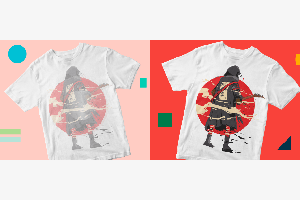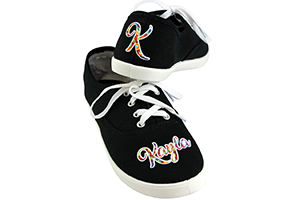January 10, 2013
In the August/September 2012 issue of Impressions, I discussed making practical financial decisions with regard to embroidery businesses. I will continue that concept with a focus on economics and efficiency in terms of digital decoration. The digital concept crosses many boundaries, so this article will focus specifically on sublimation, though many of the areas discussed can be applied to digital transfers as well.
Like all business owners, I learned very quickly (and usually the hard way) how to assess what things cost and how I was spending my money. After all, reducing the cost of operation without cutting into revenues should yield a potential profit increase. That’s a very simple concept — on the surface. In reality, it’s very easy to be shortsighted regarding decisions that involve money, such that you may be saving pennies, but wasting dollars.
Let’s take a look at some of the key production activities of a sublimation operation and address some of the areas where you may not be spending your money wisely. The first focus is on your blank substrate inventory. With blanks constituting the largest percentage of your overall cost, it is obvious that shopping around for a 10% savings on their cost is a big deal.
One trick is to keep a reasonable inventory on hand of commonly used products. By this, I don’t necessarily mean a lot of stock, but enough that you can keep orders moving. Buying in quantity will earn you a discounted price. Then, if you can combine that with a “sale” price, you should be able to generate some real savings. One of the nice things about sublimation is that the majority of blanks are white in color, which makes in-house inventory much more manageable.
In addition, having a reasonable amount of blanks on hand will help ensure that you don’t have to pay excess shipping fees when you suddenly need something in a hurry. Shipping can easily erode the margin of any order, especially when you have to deal with one-, two- or three-day deliveries.
PRINTER/PRESS TIPS
To decorate those blanks profitably, you will need to shop for a printer that provides the highest level of efficiency and versatility for your needs. With startup desktop sublimation printer systems (not including heat press) ranging from $500 to $1,500, it’s very tempting to focus on the lower end of the cost spectrum where it should be noted that, for the most part, a smaller price tag means smaller print area.
As an example, there is an ideal sublimation printer system that sells for $500 (minus the heat press) but the unit has a maximum paper size of 8.5″ x 14″ so you are limiting yourself to images that are smaller than that.
On the positive side, there are hundreds of items that will fit within that size parameter. However, you may find it difficult to produce a variety of T-shirt and sweat shirt images, which typically are on the order of at least 12″ x 12″. But printer size has another element that goes way beyond substrate size: production efficiency.
With larger print fields, instead of just printing single images per sheet, you can print multiple images per sheet, which makes better use of your paper. And if you have a heat press of similar size, then you also can press more items at the same time. Press time is the same regardless of how many products are on the heat press, so the goal is to put as many items as possible on at the same time.
It also should be noted that since printers typically are much faster than pressing, a small printer can be made more efficient by grouping it with a larger press, since you probably can get two full sheets printed for every press cycle.
Obviously, the combination of heat press and printer can have a significant impact on your production throughput, so you must focus on them as a unit, as well as individual components. Thus, we will now focus on the heat press, as this is another great example of saving pennies while wasting dollars.
In many applications, the heat press simply is a tool for applying enough temperature to melt an adhesive in order to bond some type of decoration to the surface of some product. For example, rhinestones, tackle twill, vinyl and emblems are all applied using a heat press. In these situations, you just need to be close to the required melting temperature to be effective.
On the other hand, sublimation is a molecular type of process that requires very specific heat and pressure to convert the dye to gas and ensure that it transfers from the paper into the polyester fibers (apparel) or polymer coating (non-apparel) of the product being decorated. As a result, there is very little margin for error in terms of heat press parameters. In fact, a variance of 10°F can have an adverse effect on color vibrancy and image clarity. Thus, sublimators need to focus on investing in a high-quality heat press to ensure consistent and reliable results.
Your heat press will be the most expensive part of your sublimation production equipment, but don’t cut corners to save money up front. Simply investing in a quality heat press, which will pay for itself many times over in the long run, can eliminate many sublimation quality issues. And the better units will last many years, whereas the low-end models tend to have a much shorter life span.
The best artwork in the world is useless if the heat press has fluctuating temperature, cold spots, uneven surfaces, etc., and those are all things that tend to be directly proportional to the price tag.
In addition to buying a reliable heat press, pay close attention to size as already noted. But there is another production size angle that is just as important as the concept of efficiency, and that is true workspace.
Heat presses tend to be cooler along the edges, which means you don’t want images that extend to their far reaches. For a high-quality press, you typically find a minor drop-off in temperature in a 1-inch-wide strip around all four sides. Thus, a 16″ x 20″ press is really more like a 14″ x 18″.
But with the lower-quality units, that drop-off zone can be closer to 2 inches wide, which means a 16″ x 20″ model may be akin to a 12″ x 16″ press. It’s not a big deal with some applications, but when it comes to sublimation, it can make a difference.
The bottom line is that spending the additional money up front to buy high-quality equipment that provides years of reliable and flexible production will pay for itself many times over in the grand scheme of things. And in reality, the difference between good and great in terms of production options is only about $1,000. Though it may sound like a lot when you are writing the check, a year from now you won’t even remember — unless you bought inferior products that slowed your production, limited your range of products and led to questionable quality.
PAPER/INK CONSIDERATIONS
The next area of focus is efficient use of transfer paper. With individual sheets costing $0.20 to $0.25 on average, transfer media typically is 30% of the production materials cost. Thus, you should maximize how you use it, as unprinted areas are totally wasted.
However, don’t get so pumped up on saving money that you start spending inordinate amounts of time trying to figure out how to maximize image placements. Remember that the paper cost is only $0.25, whereas one minute of production time is probably a good bit more than that. If you spent 10 minutes to save a quarter, then you probably wasted several dollars in the effort.
Now we move on to ink. Too many sublimators get hung up on ink prices, when in actuality its one of the smallest costs in the production process. A far larger cost is unused ink disposal.
All ink (not just sublimation) has “use by” dates. Once that ink goes out of date, there is a possibility that you will run into quality issues such as banding, color degradation, clogged heads and more. No one wants to discard unused ink, but the cost of damaged goods will be considerably higher. A good rule of thumb is to keep enough ink around to last you two to three months.
Use this same focus when purchasing a new printer platform. Investing in a larger unit such as a 24- to 44-inch printer could make sense if you go through ink quickly enough, but your cost savings evaporates when you toss the out-of-date ink in the trash. Buy what you need when you need it and monitor your usage to get a good handle on future needs.
With sublimation it’s critical that you place some type of protective sheet between the upper platen of the heat press and the item being sublimated. In slang terms, these are blowout sheets. The primary purpose is to prevent any stray ink or dirt from getting onto the platen, which could then be transferred onto other products. Conversely, it also will prevent anything that does happen to get onto the platen from being delivered to the surface of the substrate during pressing.
Starting out, most people use the Teflon sheet that comes with the heat press. But those sheets don’t last forever and should be replaced as soon as they get dirty, cracked or stained. That might be one use or 100. Thus, you must inspect it on every press cycle and then toss it once you see the first hint of stray ink. But that can be time consuming and the first time you forget is the time it matters most.
A better solution is a one-time-use blowout sheet that is absorbent and disposable. Butcher paper and newsprint are the two most popular forms of throw-away protective sheets. Newsprint in particular comes in sheets or rolls and can be purchased from paper and printer supply houses, art stores, office supply stores, etc. In addition you may be able to purchase from your local newspaper.
Use the paper once and throw it away each and every time. It may seem like a colossal waste of money, but it’s not. A quick online search shows one company that offers 1,200 20″ x 30″ sheets for $39, which works out to about $0.03 per sheet. And you can probably find rolls even cheaper. But if the cost still bothers you, just add an extra nickel to the price of everything you sell.
So at the end of the production day, it really pays to understand the hidden costs of making equipment and material decisions. Many times the true cost savings materializes over time and thus is not readily visible without looking a bit deeper and actually pulling out a calculator. If you plan to be in business long term, then make decisions that have the best long term effects. The satisfaction of saving a few pennies upfront can quickly turn to frustration when six months from now you realize how expensive that decision really was.
Award-winning author and international speaker Jimmy Lamb has more than 20 years of apparel decoration experience. He currently is manager of communications for Sawgrass Technologies, Charleston. S.C. For more information or to comment on this article, e-mail Jimmy at jlamb@sawgrassink.com. Hear Jimmy speak on sublimation topics at the 2013 Imprinted Sportswear Shows (ISS). Individual seminars are just $25 if you pre-register: issshows.com.
April 12, 2023 | Sublimation
As you work toward becoming an experienced dye-sublimation apparel, general merch or customized promotional items decorator, you may come across one or more obstacles, like your transfers coming out blurry, dull or faded.
FULL STORY
June 1, 2022 | Sublimation
How many times have you wished that you could sublimate a product that wasn’t polymer-based or polymer-coated.
FULL STORY
October 8, 2021 | Sublimation
I think the philosophy of lagniappe should be taught at every school and practiced by every business. A French word meaning “unexpected extra gift,” lagniappe often is used in Louisiana. In fact, sublimation decoration is a fantastic example of this.
FULL STORY




